Entoloma serrulatum (Fr.) Hesler - Blue Edge Pinkgill
Phylum: Basidiomycota - Class: Agaricomycetes - Order: Agaricales - Family: Entolomataceae
Distribution - Taxonomic History - Etymology - Identification - Culinary Notes - Reference Sources
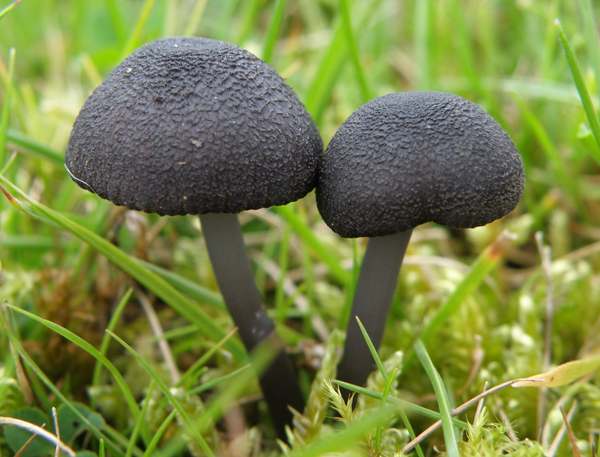
Blue-black is an unusual colour for a mushroom, and the radially fibrillose cap that often breaks up into fine scales near the centre helps distinguish this lovely Entoloma from other bluish species. The pallid gills have blackish edges. (Such a characteristic is known as ‘marginate’.)
Distribution
Uncommon to rare in in southern Britain, Ireland, and southern mainland Europe this pinkgill is fairly common in Scotland and Scandinavia.
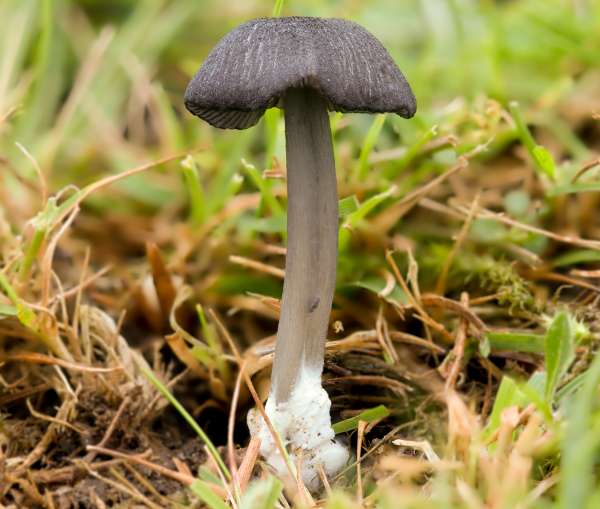
Taxonomic history
The basionym of this species was defined when, in 1818, the great Swedish mycologist Elias Magnus Fries described this species scientifically and gave it the binomial name Agaricus serrulatus. (Most of the gilled mushrooms were included initially in a gigantic Agaricus genus, since largely dismantled with most of its contents distributed across other new genera.) Its currently-accepted scientific name dates from 1967, when American mycologist Lexemuel Ray Hesler (1888 - 1977) transferred this pinkgill (with several others) to the genus Entoloma, thus establishing its scientific name as Entoloma serrulatum.
Entoloma serrulatum has several synonyms including Agaricus serrulatus Fr, Agaricus atrides Lasch, Eccilia atrides (Lasch) P. Kumm., Leptonia serrulata (Fr.) P. Kumm., and Leptonia serrulata var. levipes Maire.
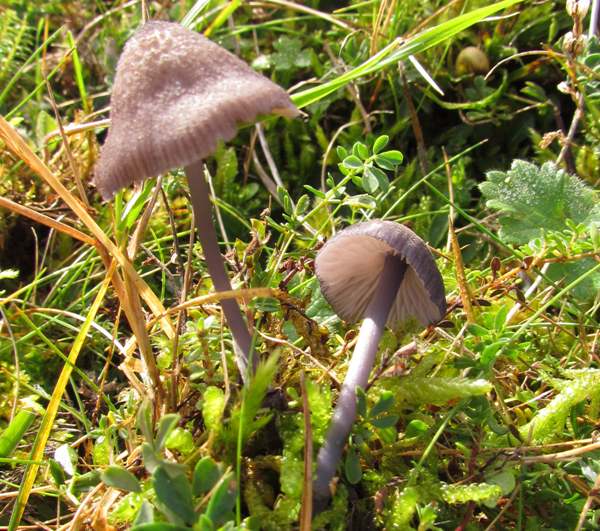
Etymology
The generic name Entoloma comes from ancient Greek words entos, meaning inner, and lóma, meaning a fringe or a hem. It is a reference to the inrolled margins of many of the mushrooms in this genus.
The specific epithet serrulatum comes from Latin and means minutely serrate - having tiny projections like the teeth of a saw - and is a reference to the finely serrated edges of the gills of this mushroom..
Identification guide
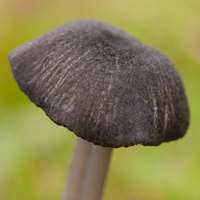 |
Cap1.5 to 3.5cm across; initially convex, expanding to become broadly convex or umbilicate; blue-black, becoming brown when old; radially fibrillose; silky or finely scaly. |
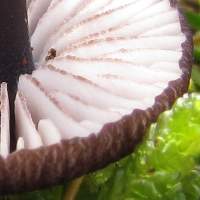 |
GillsAdnexed sometimes with a decurrent tooth; fairly broad and moderately spaced; with serrated or jagged edges (hence the specific epithet); pale bluish-white turning flesh pink, with blue-black edges. Stem4 to 7cm long and 2 to 3mm diameter; silky with blackish dots near the apex, smooth and blue-black below; hollow; cylindrical; no stem ring. |
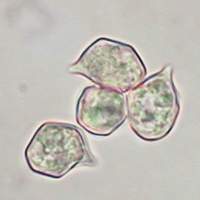 |
SporesIrregular, with 5 to 7 angles in side view; 9-12 x 6.5-8μm. Spore printPink. |
Odour/taste |
Odour slightly mealy; taste not distinctive. |
Habitat & Ecological role |
Saprobic, usually alone or in small groups in unimproved pastures and moorland; sometimes under conifers and broad-leaf trees in open woodland. |
Season |
Fruiting from early summer to late autumn in Britain and Ireland, provided the weather is mild. Most often seen during early autumn. |
Similar species |
Entoloma chalybaeum is a taller species but with a slightly smaller cap diameter; its gills do not have the distinctive black edges that are associated with Entoloma serrulatum. |
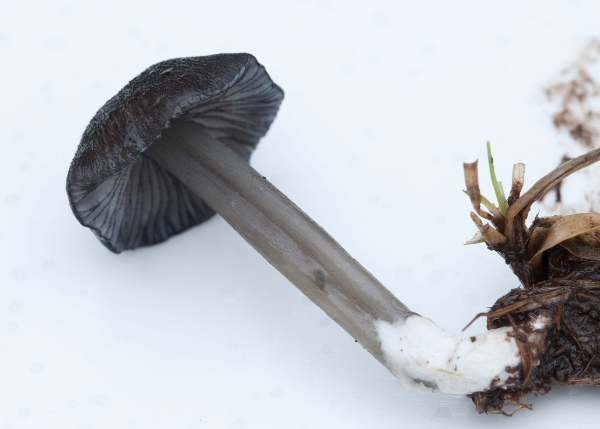
Culinary Notes
Reported in some field guides to be inedible and in others as poisonous, Entoloma serrulatum is definitely not one for the pot. (Some Entoloma species - for example Entoloma sinuatum - are known to be deadly poisonous.).
Reference Sources
Fascinated by Fungi, 2nd Edition, Pat O'Reilly 2016, reprinted by Coch-y-bonddu Books in 2022.
Knudsen H., Vesterholt J. (eds) Funga Nordica: agaricoid, boletoid and cyphelloid genera - Nordsvamp, 2008
Hesler L. R. Entoloma in Southeastern North America; Lubrecht & Cramer Ltd., 1967.
British Mycological Society, English Names for Fungi
Dictionary of the Fungi; Paul M. Kirk, Paul F. Cannon, David W. Minter and J. A. Stalpers; CABI, 2008
Taxonomic history and synonym information on these pages is drawn from many sources but in particular from the British Mycological Society's GB Checklist of Fungi.
Acknowledgements
This page includes pictures kindly contributed by David Kelly.
Fascinated by Fungi. Back by popular demand, Pat O'Reilly's best-selling 450-page hardback book is available now. The latest second edition was republished with a sparkling new cover design in September 2022 by Coch-y-Bonddu Books. Full details and copies are available from the publisher's online bookshop...

